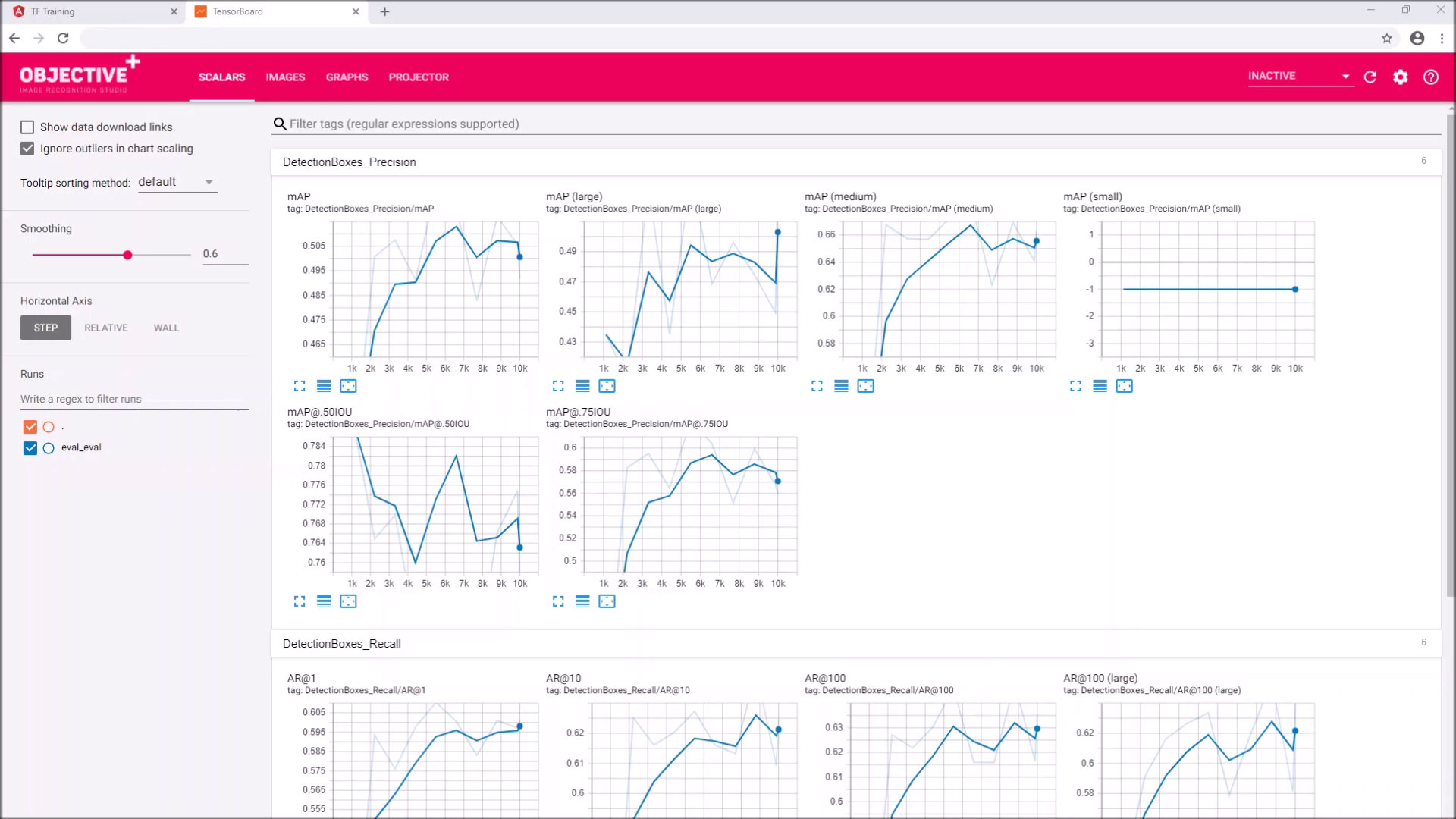
OBJECTIVE+
See, learn and understand the content of digital images
OBJECTIVE+ is a versatile tool that can replace almost all optical inspections by reliable computer-aided quality control.
The entire UX was designed for use in an industrial environment by the process supervisor.
The platform solution encompasses a modular and automated end-to-end toolchain and enables a company-wide collaborative setting. It furthermore offers the greatest possible flexibility in the implementation of all use cases in the context of computer vision. OBJECTIVE+ provides a wide range of services for ongoing operational problems like the optimization of quality inspections or the detection, classification and segmentation of objects.
Features, advantages and functionalities
Labeling
OBJECTIVE+ features a highly intuitive label tool. Relevant objects on images are marked and labeled under different categories by drawing bounding boxes.
It also includes label suggestion: automatic labeling with the help of AI on base of preliminary model.
In addition, the label tool supports other image annotation tasks such as image classification and image segmentation at pixel-level.
Model Training & Testing
OBJECTIVE+ offers model training using deep learning frameworks like TensorFlow, Microsoft CNTK, PyTorch and others. It also has integrated image augmentation methods and evaluation of accuracy and loss metrics.
Furthermore it has the capabilities to map complex dependencies by logically linking individual test steps from the integrated test plan logic.
Deployment
OBJECTIVE+ provides computer vision and realtime image processing as well as a dashboard for visual representation of detected objects and test results of the deep learning model.
Additionally: fully automated process from image acquisition to processing and evaluation using Microsoft Azure IoT Edge

Microsoft Azure and Azure IoT Edge
OBJECTIVE+ offers the possibility to provide infrastructure components quickly, thanks to specific Azure Resource Manager (ARM) templates defined for certain application scenarios. These templates are used to deploy predefined PaaS services, e.g. cloudways, storage components, machine learning components, virtual machines (VM) or triggers.The central Azure service of the presented solution is Microsoft Azure IoT Edge.
Microsoft Azure IoT Edge provides an innovative approach to system and network architecture that helps companies to work beyond the limits of traditional cloud-based solutions. The data generated by IoT Edge devices is typically transferred to cloud servers for analysis. The transmission of large amounts of data is a cost factor to be considered and can lead to time delays or latency due to limited bandwidths. Instead of storing and processing data in a cloud or central data centre, cloud workloads are migrated to the edge of the network. Azure IoT Edge provides features such as authentication and communication from local devices. This allows IoT applications to run either offline or without permanently communicating with the cloud.
Application areas
Your contact
You would like to learn more or would like a consultation on the topic?












